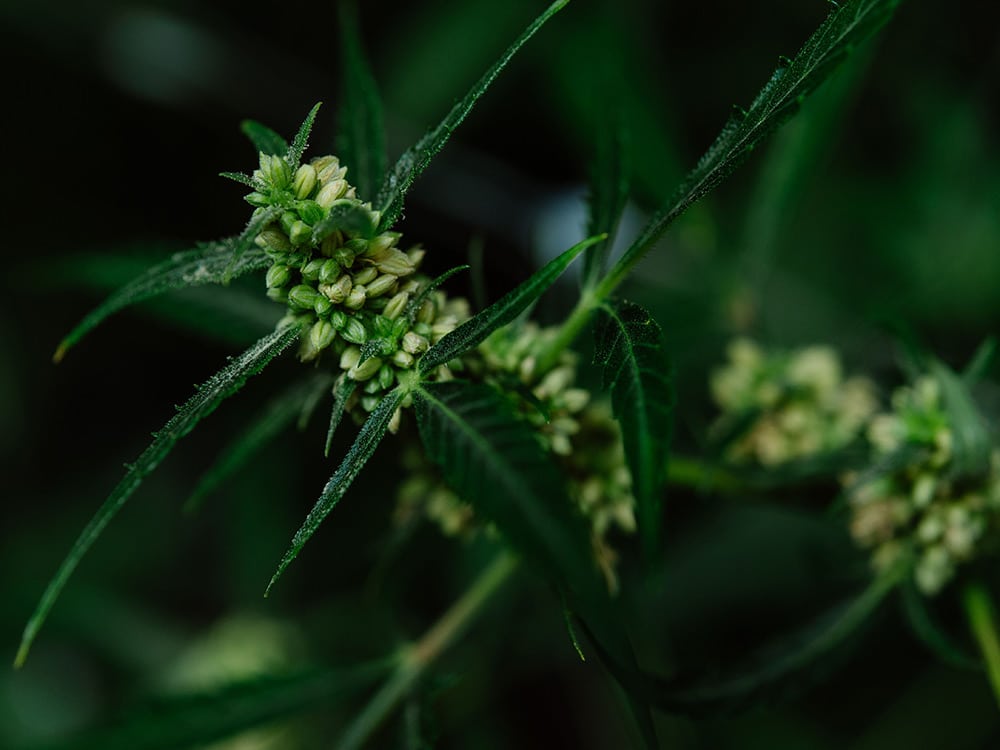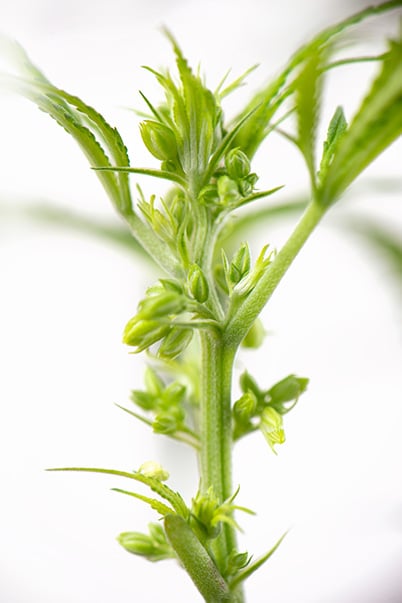Autoflower CBD Male & Herm Identifcation and Removal
An Introduction to Males & Herms
Searching for males requires a thorough and regular search, with a keen eye. Only employees who are very familiar with cannabis plants should be assigned to this task. In most instances, the process of searching for males requires moving through thousands or tens of thousands of plants in less than an hour and finding just a few of these plants. In addition to a keen and experienced eye, the process also requires focus and confidence.
The feminization process produces a very small percentage of phenotypic males. This ranges from 1 in 1000 1 in 2500 depending on the strain, so 99.99% of your seed will be true to it’s feminization.
Depending on your plant counts per acre, you will likely see between 10-15 males per acre with the vast majority of these males present between Day 40-50 from sowing.
The Mechanics of the Search
Walk the Walk
Starting the middle of the 2nd week of flower (approximately Day 40 from sowing), every bed needs to be walked and checked. This should be carried out 3 times over the next 10 days. There is a very good chanc you will remove all of the males by Day 45 however it is better to be safe than to have to deal with a seeded crop. We can not stress enough the importance of being diligent at walking your crop for that 3rd time at Day 50. We’ve found the easiest way to do this is to have two people walking each bed in tandem. Each person takes one line of plants and looks at every plant. An appropriate walking speed is just slightly slower than casual walking speed, roughly 1-1.5 mph. Two people walking at this speed should be able to accomplish an acre in about an hour.
Check the Pits
Carefully look at 10 plants as a subset of each variety. Examine the lowest nodes on the plant for more subtle signs of herm. Specifically, look for male flowers clustered in the armpits of the lower canopy.
Remove Abnormalities
If a plant looks “funny” or “off” or different in any way, make sure to check the lowest branches for early signs of hermaphroditism (especially the areas where the branches meet the main stem, the “pre flips” or initial calixes). We have found that the plants that look weird are often the ones that herm later on.

Remember to Bag ‘Em
Plants that have male flowers that have already opened should be removed from the field very carefully, and treated with the utmost caution in order to avoid spreading pollen onto surrounding plants. Take a plastic bag and put it over the entire plant, disturbing it as little as possible. Pull the bag down as low as you can, ideally all the way to the ground, and hold the bag closed around the base of the stem. Then pull the plant out by the base of its stem, removing the entire root ball, and tie the bag shut immediately. Do not open the bag again.
Plants that have no open flowers may be combined into one bag. Be very careful when making this assessment, as some male flowers open much earlier than others. All plants need to be put into a plastic bag and thrown away. After pulling up these plants do not leave the plants on the ground in the field or at the edge of the field. Dead males/herms can open flowers and release pollen days after they have been pulled up.
Download the PDF Here!
Atlas Seed aims to make your diagnosis of taking care of male and hermaphroditic plants the right way! Be sure to download our guide here and put this knowledge to work in the field and take care of your plants.

